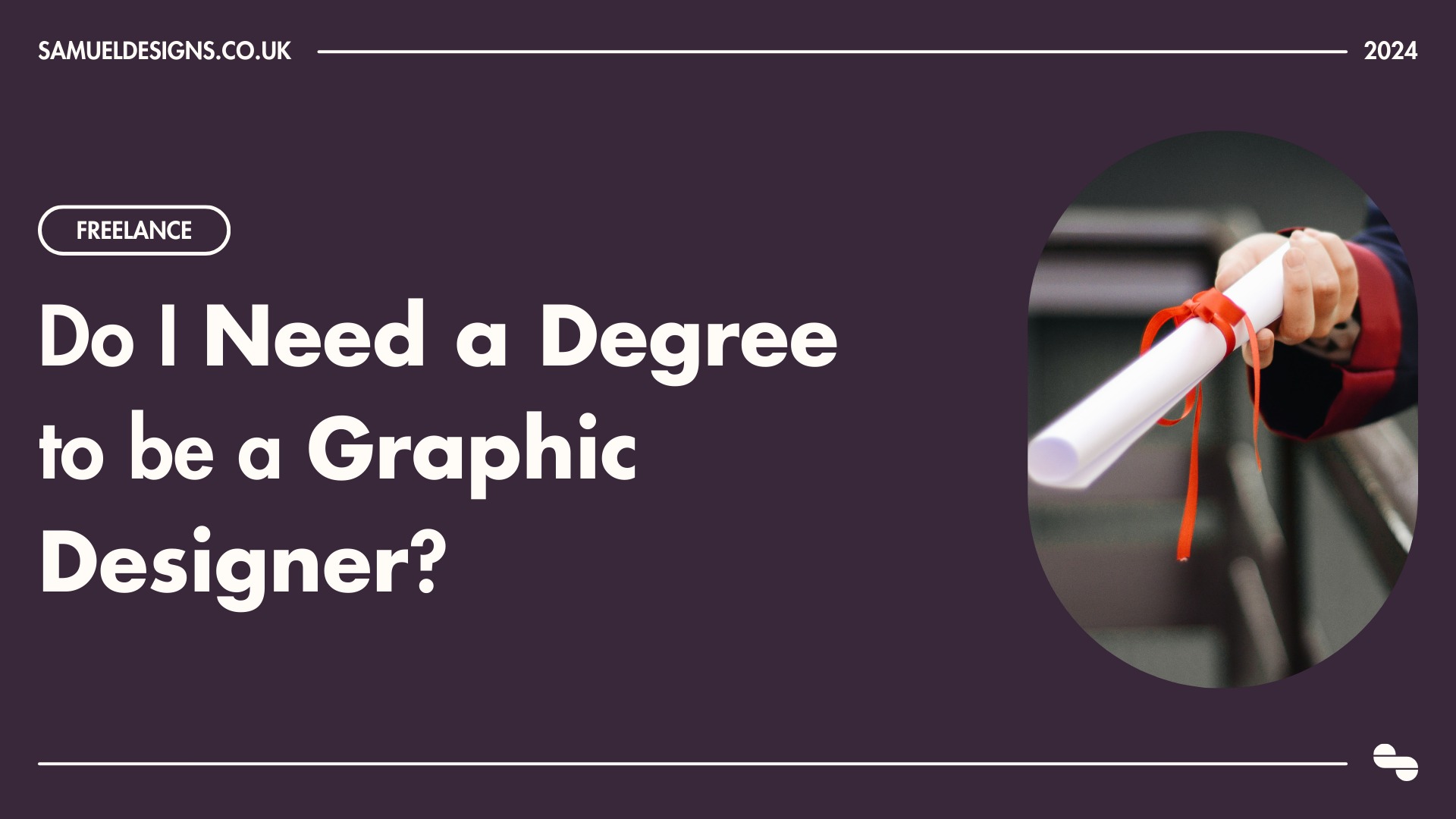Graphic Design Degree: Do I Need a Degree to be a Graphic Designer?
The path to becoming a graphic designer has evolved over the years, and the question of whether a degree is essential has become a central point of debate.
For some, it’s a vital part of the path to becoming a design professional, and for others, it’s an unnecessary (and often too formal) step that can be avoided altogether.
Aspiring designers often grapple with the decision of pursuing a formal education or diving straight into the industry. In this article, we'll explore the pros and cons of obtaining a graphic design degree.
Pro: Skill Development
A graphic design degree program provides a structured environment for honing your skills. Courses cover a broad spectrum, from the fundamentals of design principles to mastering industry-standard software.
A multiple-year course will often provide you with a learning roadmap which covers all the essential areas of graphic design. Through this, you’ll be able to get a solid grasp of everything you need to know to “make it” in the design industry.
Learning on your own can often feel very overwhelming, and you may not know where you should start, or even what you should be focusing on.
Con: Cost and Debt
Pursuing a degree can be financially burdensome, with tuition fees, living expenses, and potential student loans. The financial investment may outweigh the immediate returns, especially considering the availability of alternative learning resources.
It’s no secret that we’re currently in a time where the cost of living has climbed dramatically. This looks like it’s set to continue for some time, so taking on an intense student debt may not be the best financial move.
Furthermore, when you leave formal education and begin to look for jobs within the design industry, it can be tricky to land your first role. This may make the added burden of heavy debt even more stressful. This isn’t to dissuade you, but rather to provide realistic info.
Pro: Networking Opportunities
College offers a unique chance to connect with like-minded individuals and industry professionals. Networking can open doors to internships, collaborations, and job opportunities.
This isn’t to say that you can’t get this outside of a university or college setting. There are plenty of networking events, summits, and masterclasses you can attend without needing to be in formal education. However, networking will be much easier inside an institution which is inherently a melting pot of like-minded people.
Con: Rapidly Changing Landscape
The graphic design field is dynamic, with trends and technologies evolving swiftly. A degree might not always keep pace with the latest industry developments, emphasizing the need for continuous self-learning.
University and college courses take a long time; both to develop and to work through. And something you likely already know is that the graphic design landscape is continuously changing, developing, and evolving. You may find that what you learn during your course is no longer as relevant as it once was when you leave formal education.
Of course, the knowledge you learn in your course will be transferable, but there’s a chance the tools on which you learn will move out of vogue, with new ones taking their place.
Pro: Portfolio Building
Degree programs often culminate in a portfolio that showcases your best work. This portfolio becomes a tangible representation of your skills and creativity, crucial when applying for jobs.
As you work through a course, you’ll naturally develop a portfolio without thinking about it. More often than not, each project you work on will result in something that can go into your portfolio, meaning that you build it as you learn.
Generally speaking, this isn’t the case when you take on independent learning. It can be, of course, but for the most part, you’ll need to either work on personal design projects or with paying clients to fill out your portfolio.
Con: Experience vs. Education
Some employers prioritize practical experience and a strong portfolio over formal education. Building a robust body of work through freelance work, internships, and personal projects can sometimes be more valuable than a degree.
On a purely anecdotal note: My father was a mechanic. The garage in which he worked had hired a new person, and this new person had gone through all the formal education needed. So on paper, he was the right person for the job.
However, when my father and I would chat about our work, he would often say he needed to cover for the new person. This was down to the new guy having all the qualifications to get the job, but none of the experience to succeed.
This is most definitely the case with the design industry too. Learning in a formal setting will give you a solid understanding of graphic design theory, but it won’t give you the on-the-ground experience that employers are so often looking for.
Pro: Industry Exposure
Through internships, workshops, and industry collaborations, students gain firsthand experience and insights into the workings of the graphic design industry.
We mentioned in the Experience vs. Education section that having industry experience is very important when looking for roles to apply for. In some cases, universities and colleges will provide this.
Many will have connections with businesses outside of the school location where you’ll be able to complete work experience. Some may also bring in experienced graphic designers to discuss their work outside and “in the real world”, so to speak.
If you’re considering a formal education and attaining a graphic design degree, I highly recommend looking for institutions that make internships, workshops, and work experience a key part of the curriculum – as this non-classroom experience is essential.
Con: Diverse Learning Paths
Graphic design is a field where creativity knows no bounds. Many successful designers have forged their paths through online courses, workshops, and self-directed learning, emphasizing the diversity of available educational routes.
If you think about the subject of graphic design as a whole, there are so many routes and avenues that you can explore. You have branding, 3D design, typography, and web design, to name but a few. You may find that formal courses will focus on one specific area, and ignore the rest.
Whilst this is fine if you already know what it is you want to do, some may find this lack of exploration limiting. Plus, you may not know what it is you want to do until you do it. This is where self-guided learning, and exploring all that graphic design has to offer, can be an invaluable experience.
BONUS: See where you can learn graphic design for free here!
Conclusion
In the graphic design industry, the necessity of a degree depends on various factors, including personal goals, financial considerations, and individual learning preferences. For those who thrive in structured environments, value networking opportunities, and seek comprehensive skill development, a graphic design degree can be a valuable asset.
However, for individuals who are self-motivated, cost-conscious, and prefer a more flexible learning approach, alternative paths may lead to a successful and fulfilling career in graphic design.
Ultimately, the key lies in balancing formal education with practical experience to craft a unique and impactful journey into the world of graphic design.
Regardless of whichever path you take, consideration should be given to ensuring that you’re getting plenty of real-world experience, whether that’s through university placements as part of a course, or internships and freelance work acquired through your own means.




![Affirmations for Graphic Designers to Help You Keep Going [INFOGRAPHIC]](https://images.squarespace-cdn.com/content/v1/5cfebab7bfcecb000194cc60/1711646088600-495MRCVU0Y8Y9GS07B7A/05+-+Cover+-+Affirmations+for+Graphic+Designers+to+Help+You+Keep+Going.png)
![Colour Psychology: What Colours Mean Around the World [INFOGRAPHIC]](https://images.squarespace-cdn.com/content/v1/5cfebab7bfcecb000194cc60/1711645558379-2W1EOZ0VHHFYZOL9OIV9/04+-+Cover+-+Colour+Psychology+-+What+Colours+Mean+Around+the+World+%5BINFOGRAPHIC%5D+.png)






